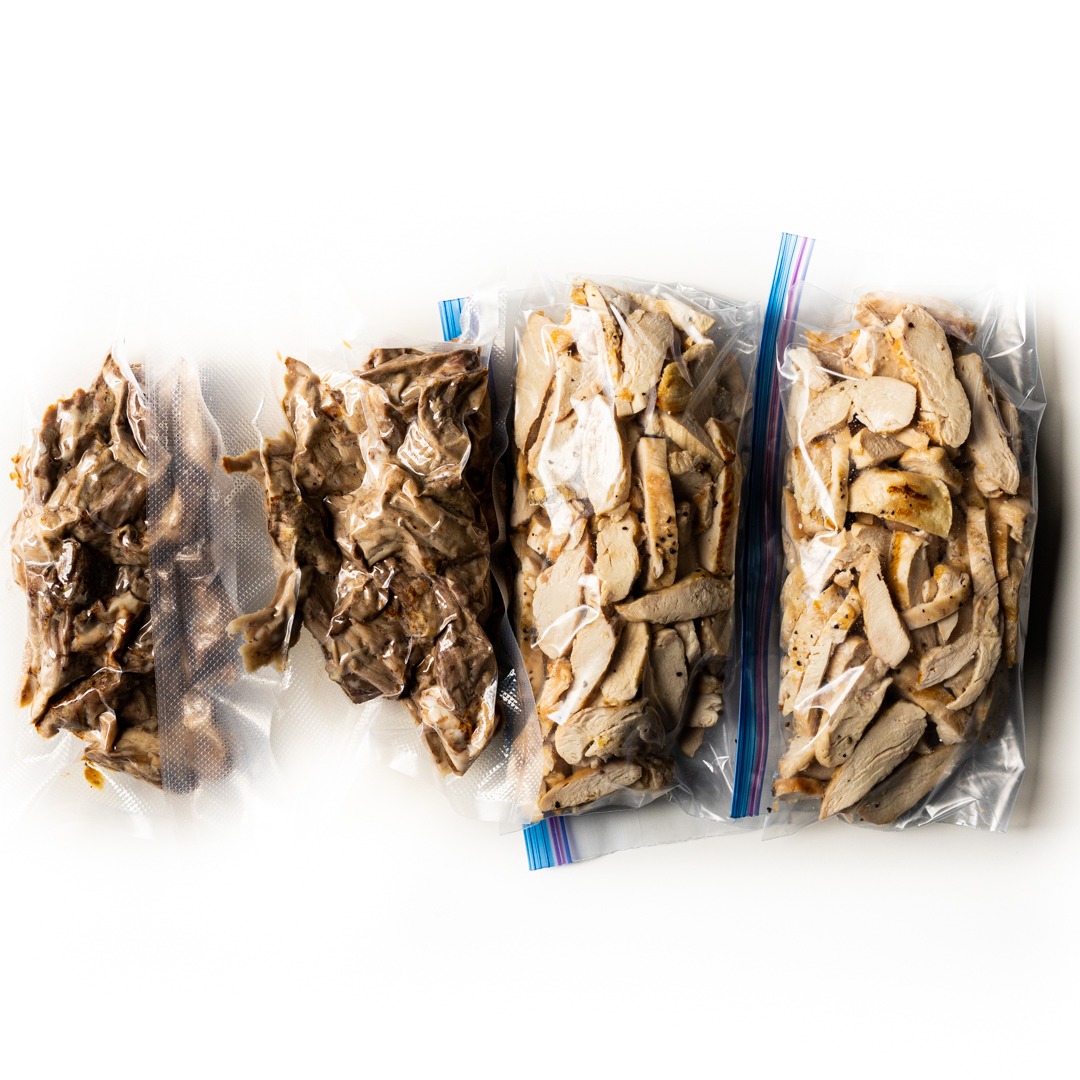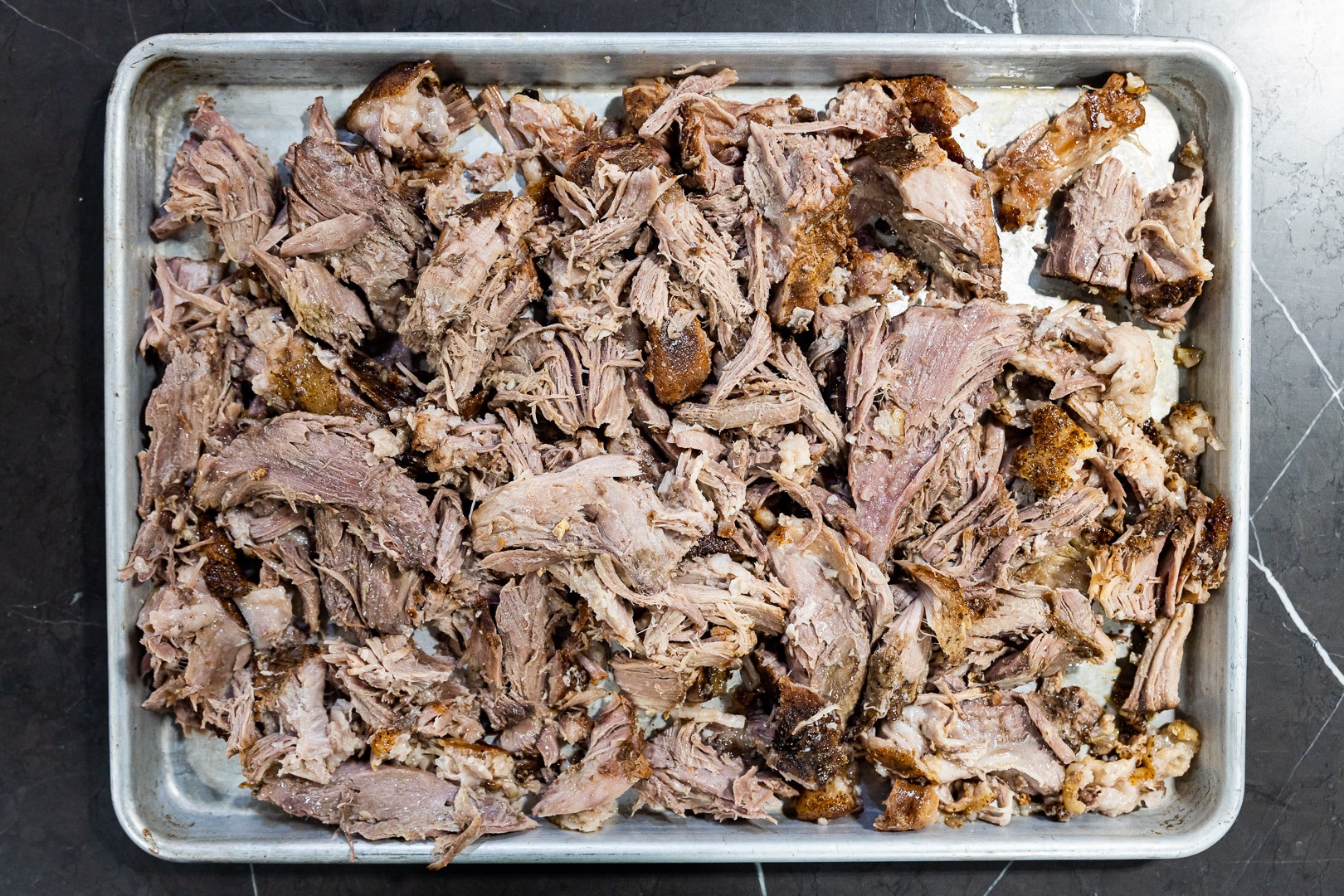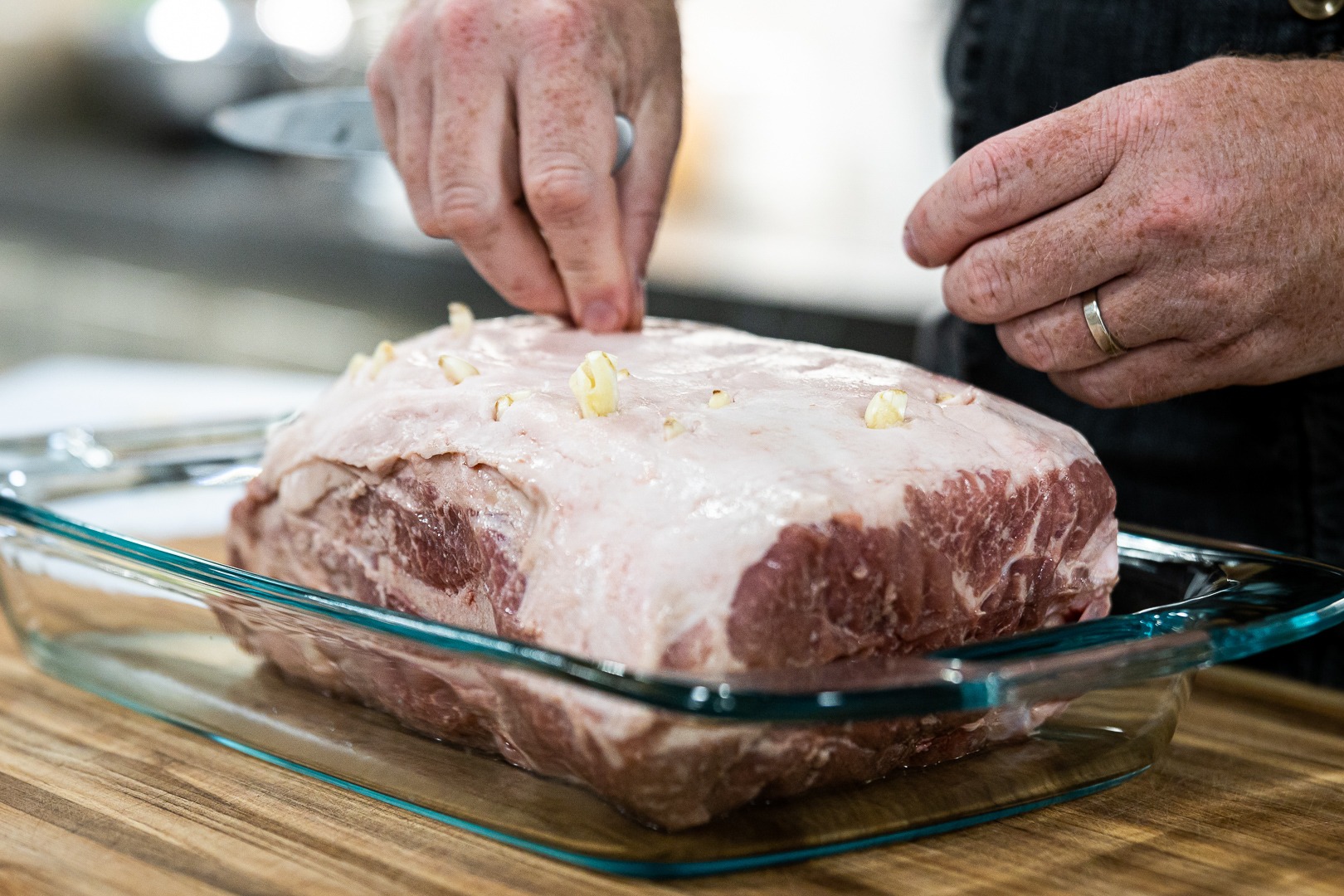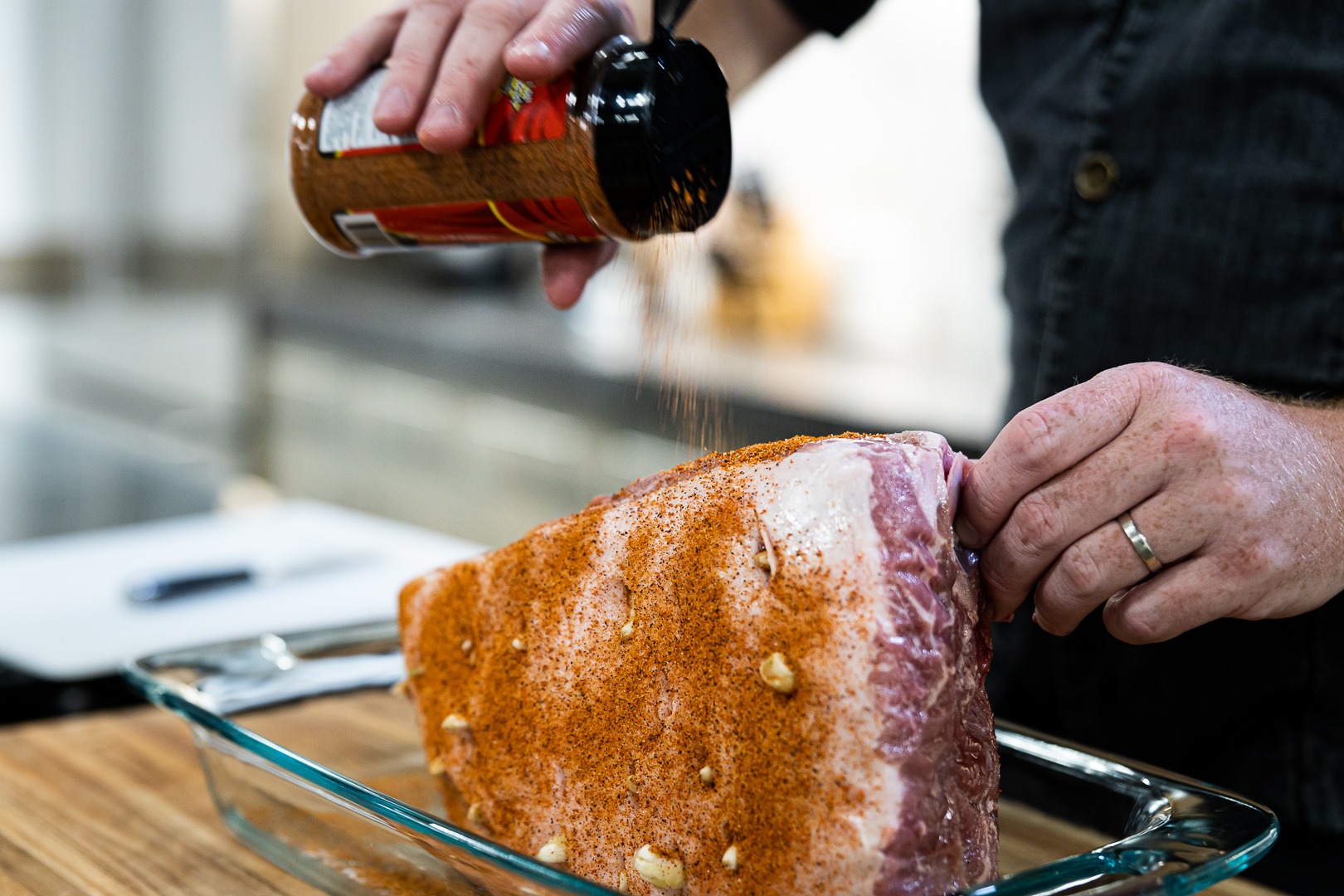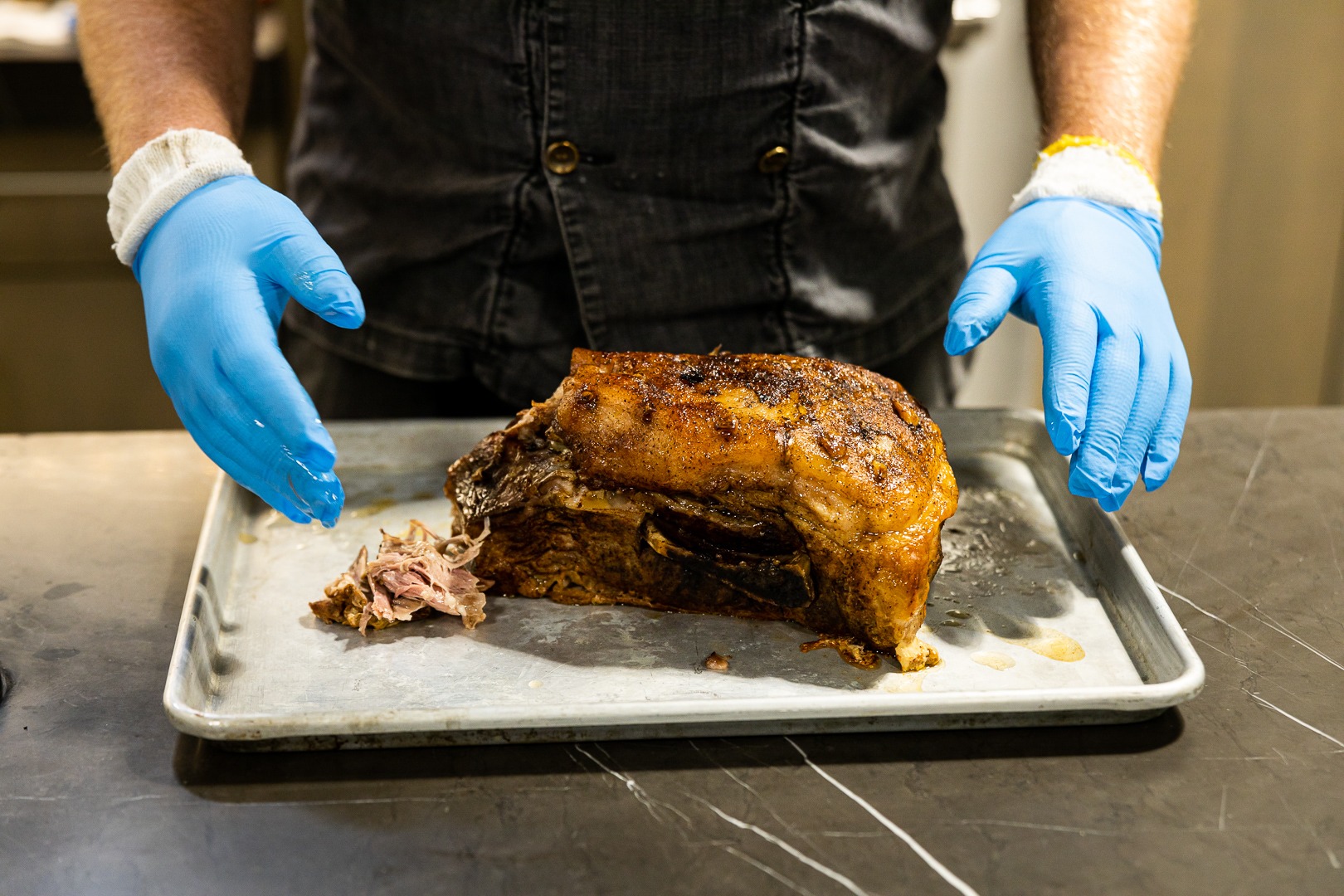Meal Prep: Temperature Considerations for Getting Ahead on Your Dinners
If you’re like me, then—despite your love of good food—you often don’t want to go through the trouble of cooking a delicious dinner every night. You know that your food is better than fast food, and honestly probably as good or better than most other restaurants, too. Home-cooked food often is!
But despite how good a cook you are, you don’t want to go through all the work when you’ve already had a full day of work/parenting. That’s where meal prep can help. The idea of preparing large parts of your meal in advance (or even whole meals!) is not new, but it may be even more relevant now than it ever has been. Here, we’ll take a look at why you should consider meal prepping and especially the thermal considerations you need to take for food that is both delicious and safe.
Why should I do meal prep?
There are lots of reasons to try out meal prepping. But the biggest three are saving money, saving time, and getting better nutrition.
Save money with meal prep
Eating out every night is crazy expensive. When I get a combo meal, it’s eight bucks just for me, let alone the other mouths to feed. If I ever get out of a cheap dinner with the family for under $40 I feel like I’m doing great, and that’s eating some pretty bad food. For $40 at home, I can prepare a meal that I’d feel comfortable serving to international dignitaries if I had to.
Now, that’s just a good argument for eating and cooking at home, not necessarily for meal prep. But meal prep stretches those dollars a lot further. If you shop sales or shop in bulk, you can get ingredients at even better prices. Buy a case of frozen chicken breasts. Get two whole pork butts in one pack at your local butcher…buying in quantity saves you money. Of course, you can’t eat all that pork in one meal, but you don’t have to! Prep it up and eat the benefits of those savings over the course of the next two months.
Save time with meal prep
It’s like I said before, after a long day of parenting/working (or whatever it is you do all day), you rarely want to fire up the stove or oven and start cooking. By the time the food is cooked, you’ve burned half your daylight for anything else, right? It seems so much faster to grab the phone and call in some delivery than to grab a pan and get cooking.
Meal prep can help! If half your ingredients are ready to go, there’s a much lower bar for entry into a home-cooked meal. And that is doubly true for the proteins. If you have a weighed-out portion of pulled pork ready to go, then all you need is to do is warm it, toast some buns, and toss together a quick veggie side. Boom. Dinner in 5 minutes.
Of course, you will have to pre-cook that pork/those chicken breasts, but here’s the thing: it only takes marginally longer to cook a lot of food than it does to cook a little of it. Grilling 5 pounds of chicken breasts only takes a very little longer than grilling one pound, and smoking 2 pork butts takes almost the same amount of time as smoking one. (Heck, even cooking a single pork butt in the oven is usually plenty for a few meals for one family!)
Do you have to take the time to do the meal prep? Yes. So carve out a couple hours on a Saturday and prep two or three proteins, maybe dice up a few whole onions, and make a couple dressings. Once you season everything, you can grill/roast/smoke/bake everything in one go, saving loads of prep time down the road—in the time it takes to cook one good meal, you’ve prepped ingredients for 10. Now when the time comes to turn off the binging and go cook dinner, it won’t be a problem.
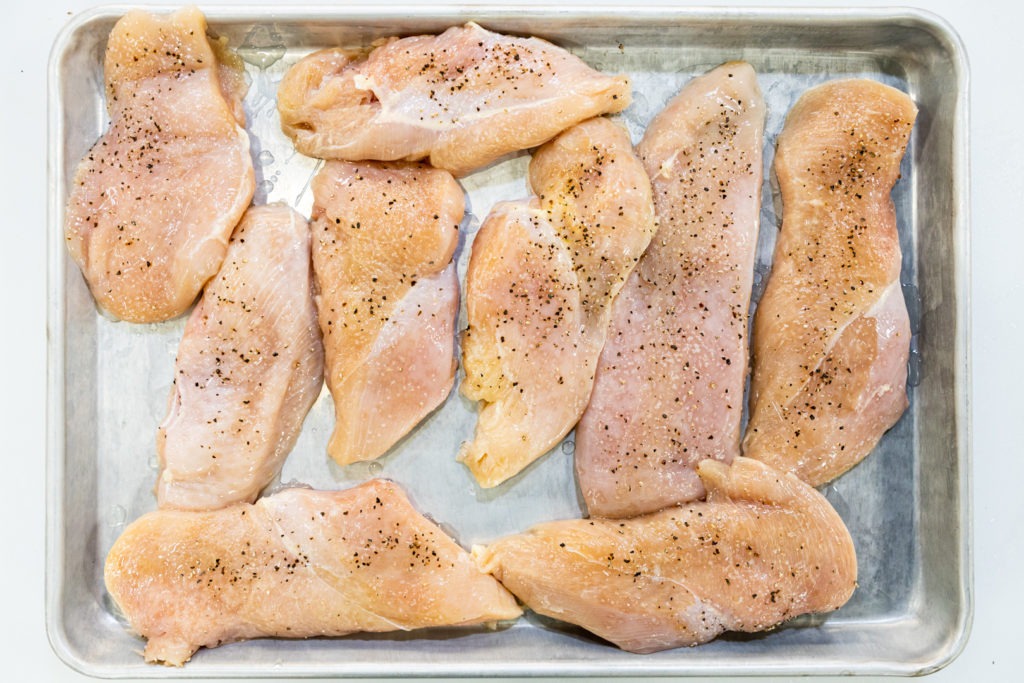
Better nutrition from meal prep
Eating out is, generally speaking, bad for you. Too many calories, too much fat, and little to no control over what goes into the food. Cooking at home gives you control over what you put in your food, and you’re a lot more likely to use wholesome ingredients than the nearest drive-through. Plus, when your food tastes better, you need to eat less of it to feel satisfied.
Thermal considerations for meal prep
Of course, there is slightly more to it than just cooking it and throwing it all in the fridge. In order to keep your food safe, you need to pay attention to temperature.
We’ve written before about some of the considerations that you need to be aware of regarding the temperature danger zone (TDZ) and that is a post that is worth reviewing, but we’ll spell out the key ideas here, too.
Cooking
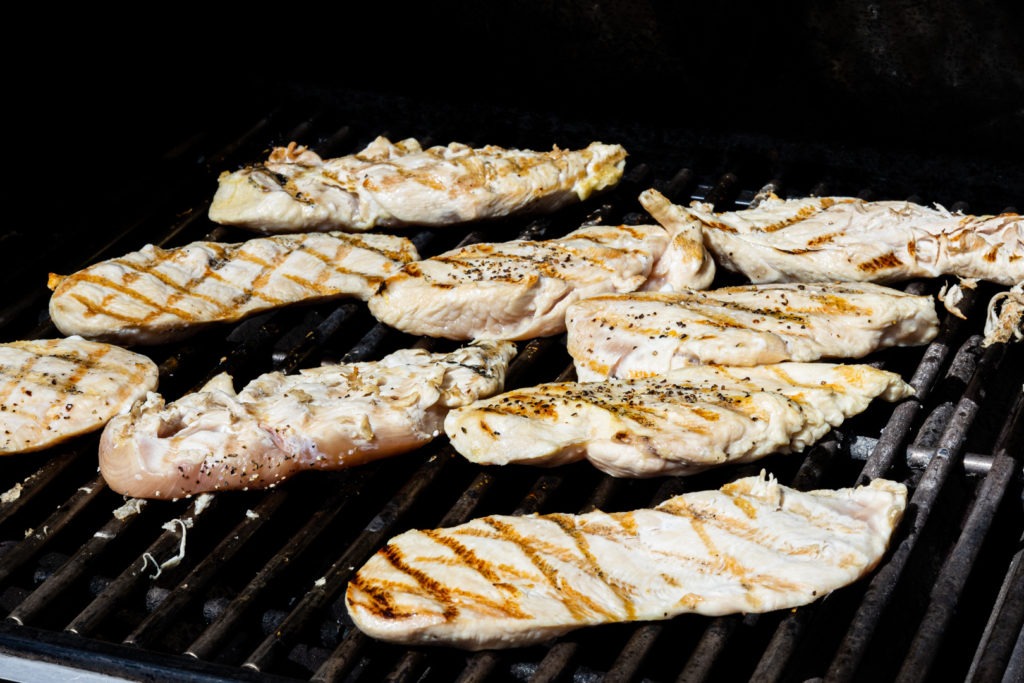
If you’re cooking up a grill full of chicken breasts, or a multiplicity of any food item, you can’t just assume that when one is done, they all are. Temping each piece is vital for food safety. Using a fast instant-read thermometer like the Thermapen® allows you to check every piece of chicken in every spot of the grill—hot spots and cool spots abound! The speedier the thermometer, the easier it is to get readings before your food burns and to make sure every piece is safe.
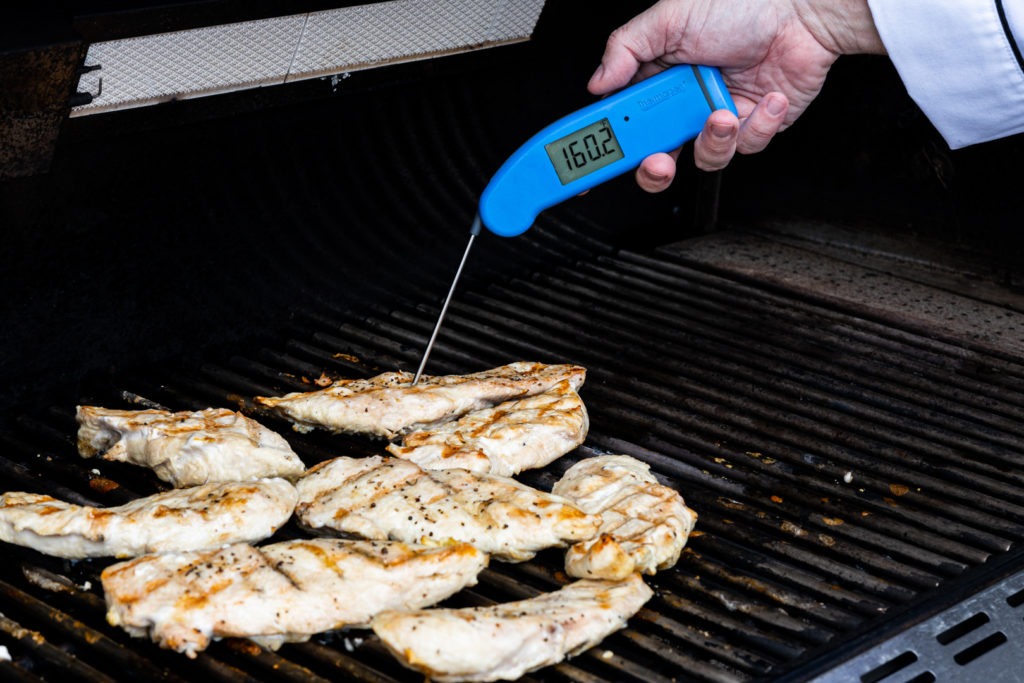
An instant-read thermometer is best for spot-checking a large number of items or for taking the temperature of anything in a high-heat environment. But if you’re cooking a larger item, or cooking in an environment that isn’t dangerous to probes, a leave-in thermometer, like the ChefAlarm®, is key to getting your meal-prepping done just right. A pork butt, a whole turkey, or even a prime rib that you want to slice thinly for Philly cheesesteak sandwiches or French-dips can be cooked best with constant temperature monitoring.
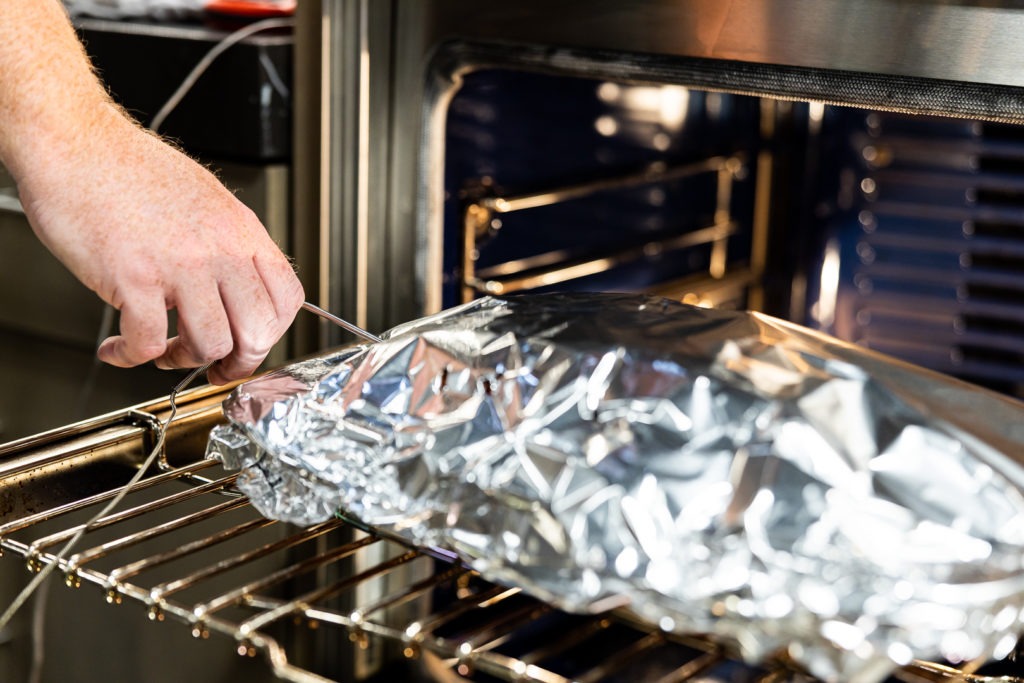
By setting an alarm for your target temperature, you can be sure that the many meals you’ll get from one cook are all cooked perfectly and are all safe.
Cooling
When it comes to food safety, there is an appropriate emphasis on properly cooking foods. It’s super important to kill bacteria by cooking your food to a high enough temperature! But it is equally important to prevent re-infestation of food by properly cooling it.
The range in which bacteria multiply most readily, called the temperature danger zone (TDZ) extends from 41°F (5°C) to 140°F (60°C). If your food spends too much time in that range while cooling, you’re much more likely to have safety issues. You have a total of 6 hours in that zone before you risk pathogens. When cooling food you, should get from 140°F (60°C) to 70°F (21°C) within the first two hours and you should then get down to 41°F (5°C) within another four hours or less.
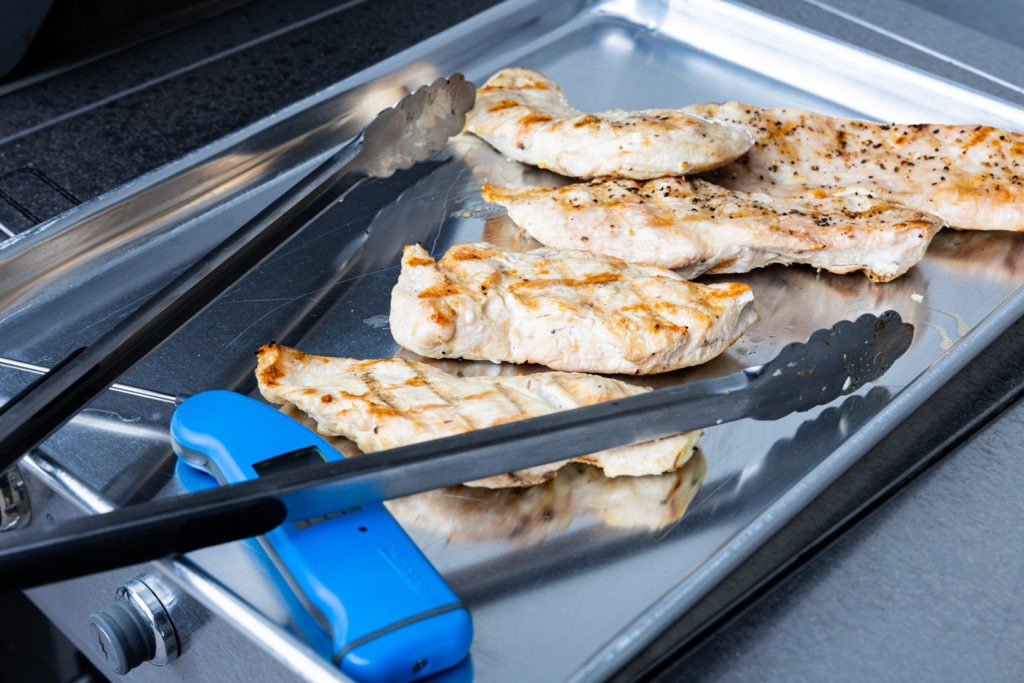
What does this mean for food prep? It means cooling your food before refrigerating or freezing it, and that means increasing the surface area and checking temps! If you pile bags and bags of hot cooked food on top of each other in the freezer or refrigerator, they will insulate each other, allowing the temperature to linger in the TDZ for a surprisingly long time.
A two-step process is the best practice for freezing prepped-up foods. By first cooling your food on the counter and then chilling it in the refrigerator before bagging and freezing, you only have to go from 40°F (4°C) to frozen, and that’s something a freezer is much more likely to be able to accomplish without overworking. The pre-chilling will also prevent your dinners from melting everything around it.
To make sure your food is properly cooled before bagging and freezing, try to spread it out over as wide an area as possible. If you have a pot of rice, dump it our onto a few sheet trays and toss it every few minutes to get maximum exposure to the air. If you have a case of chicken breasts, lay them out on a clean cutting board or on more pans so that air can circulate around them. And if you’re going to make a lot of soups for meal prep, you should seriously invest in a couple consumer-sized ice wands/cooling wands for cooling liquids. They’ll save you loads of time and dishes!
Whatever your food, and however you’ve cooled it, take its temp with an instant-read thermometer like the Thermapen before moving to the second cooling step. You’re looking for a temperature of 80°F (27°C) or less. (The University of Nebraska’s Institute of Agriculture and Natural Resources says that refrigerating food while still “warm” is ok.)
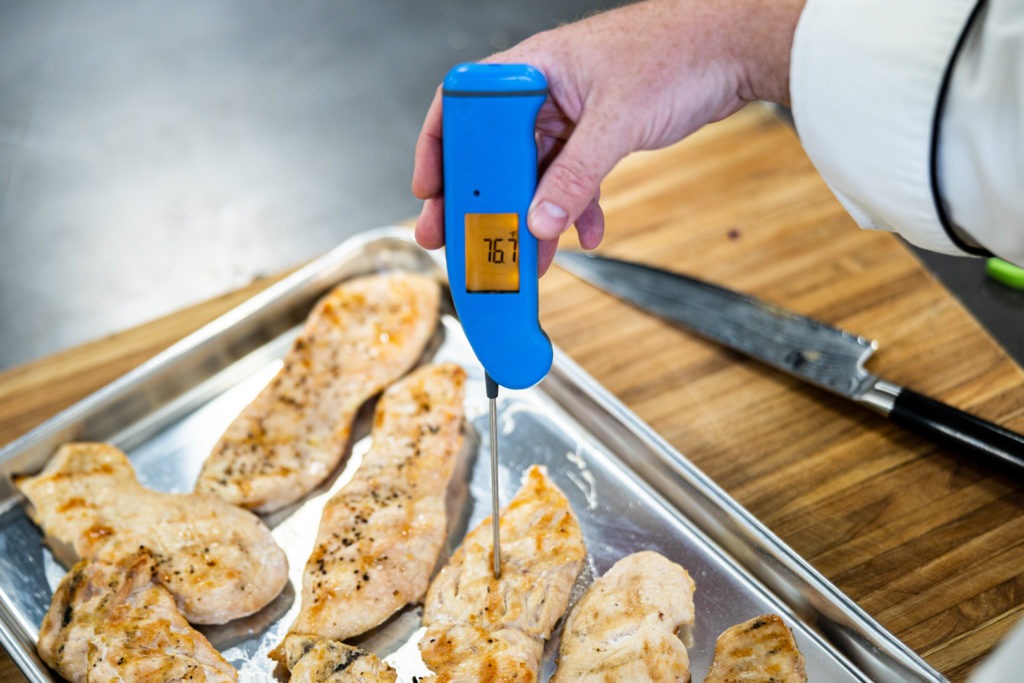
After your food is chilled to 40°F (4°C) or lower, it’s time to bag up your food in zipper bags or vacuum-seal it. In the freezer, spread the filled bags of food out as much as possible so that they can freeze more quickly.
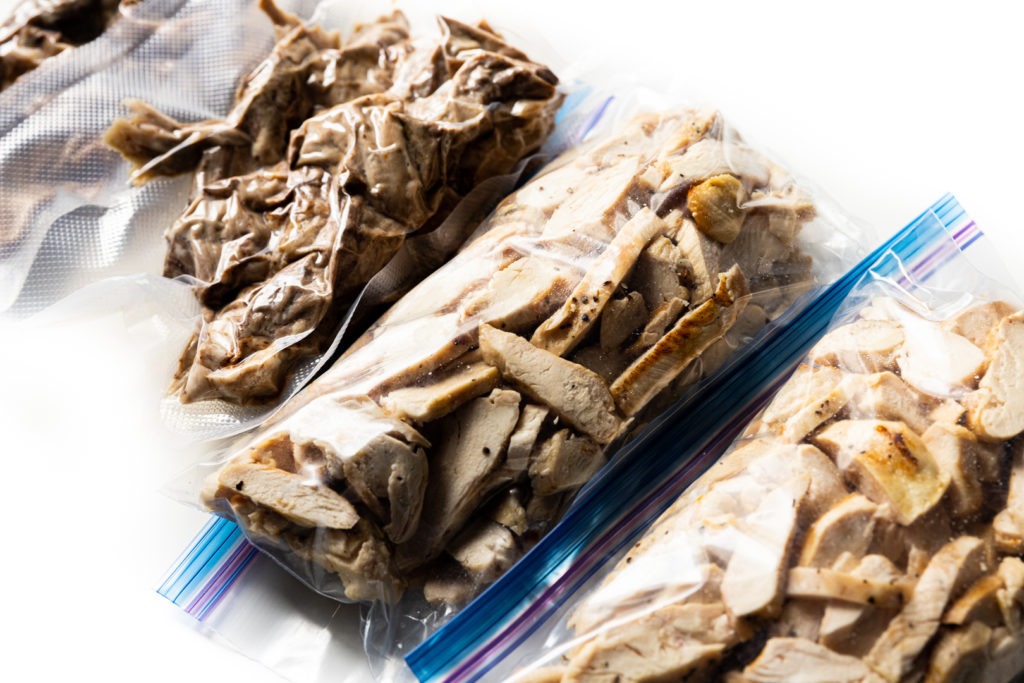
Conclusion
The last thing you want when prepping meals is to prep a whole freezer full of meals that will make you sick. Besides that, you also don’t want a freezer full of meals that aren’t any good. If you don’t want to eat what you’ve made, you’ll just eat out again!
Use temperature to make sure your prepped-up meals are delicious and safe. Cook the rice. Cook those ribs. Cook a couple of roasts. Take a weekend day of cooking and get ahead on a whole week’s worth of meals because, in the end, for a lot of foods, cooking 10 is as easy as cooking one.
Shop now for products used in this post:


